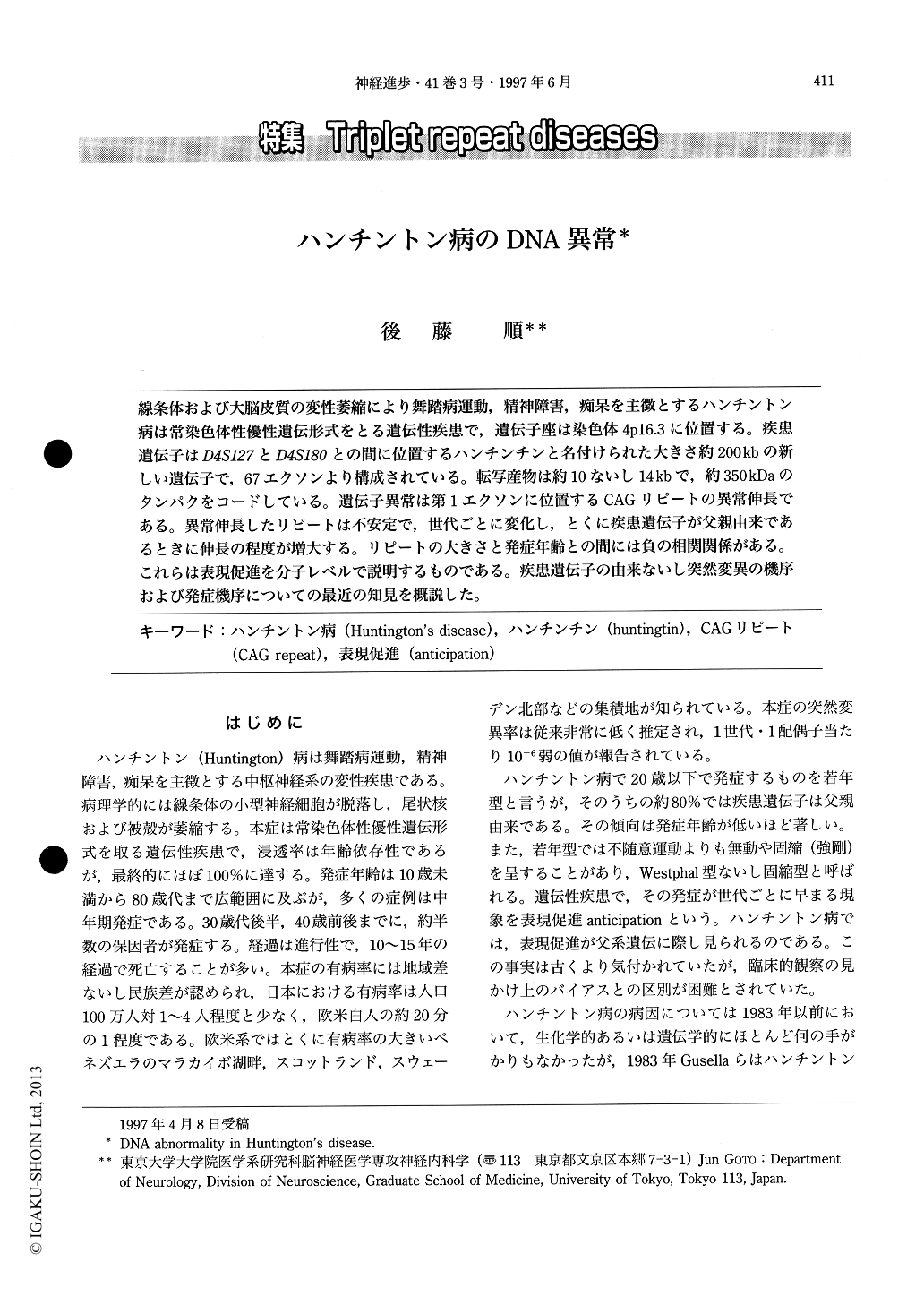Japanese
English
- 有料閲覧
- Abstract 文献概要
- 1ページ目 Look Inside
線条体および大脳皮質の変性萎縮により舞踏病運動,精神障害,痴呆を主徴とするハンチントン病は常染色体性優性遺伝形式をとる遺伝性疾患で,遺伝子座は染色体4p16.3に位置する。疾患遺伝子はD4S127とD4S180との間に位置するハンチンチンと名付けられた大きさ約200kbの新しい遺伝子で,67エクソンより構成されている。転写産物は約10ないし14kbで,約350kDaのタンパクをコードしている。遺伝子異常は第1エクソンに位置するCAGリピートの異常伸長である。異常伸長したリピートは不安定で,世代ごとに変化し,とくに疾患遺伝子が父親由来であるときに伸長の程度が増大する。リピートの大きさと発症年齢との間には負の相関関係がある。これらは表現促進を分子レベルで説明するものである。疾患遺伝子の由来ないし突然変異の機序および発症機序についての最近の知見を概説した。
Huntington's disease is a progressive neurodegenerative disorder which is clinically characterized by chorea, cognitive decline, and emotional disturbance ; it is inherited in an autosomal dominant manner. The disease locus has been mapped to chromosome 4p16.3. The gene, designated huntingtin, was cloned and the disease was found to be associated with an unstable expansion of a CAG repeat. Huntingtin gene consists of 67 exons and spans approximately 200 kb between D4S127 and D4S180. Two mRNA species of 10.3 kb and 13.7 kb are transcribed from the gene, and the size of huntingtin protein is calculated as approximately 350 kDa.

Copyright © 1997, Igaku-Shoin Ltd. All rights reserved.


